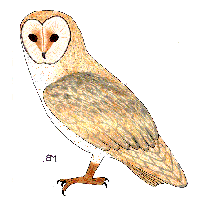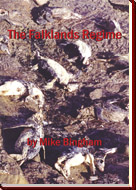 |
 |
|
|
|
|
|
|
|
|
|
|
|
Barn Owl Local Name: White Owl Breeding Range: Global The Barn Owl is extremely rare in the Falklands, with just a handful of breeding pairs. By contrast it is one of the most cosmopolitan of birds, being found on every continent except Antarctica. Preferred nesting sites are derelict buildings, caves and dense vegetation such as gorse. Between three and seven eggs are laid in a slight hollow or ledge, but no actual nest is made. Eggs may be laid anytime between August and January. Chicks remain at the nest site throughout their development, whilst the parents bring them food in the form of rodents and small birds. Barn Owls prefer to hunt at night, but the short hours of darkness during the summer mean that they often fly during the day in search of food. Large eyes and feathers designed for silent flight make Barn Owls excellent hunters. Sexes similar in appearance. |
|
|
||||||||||||||||||||||||||||



